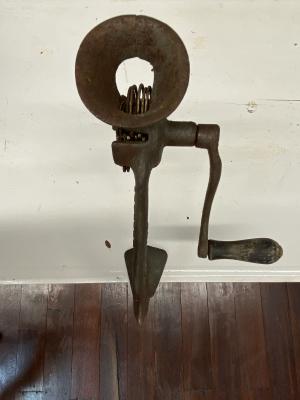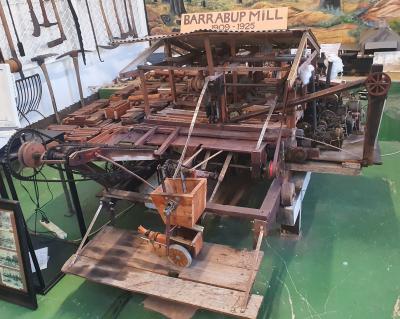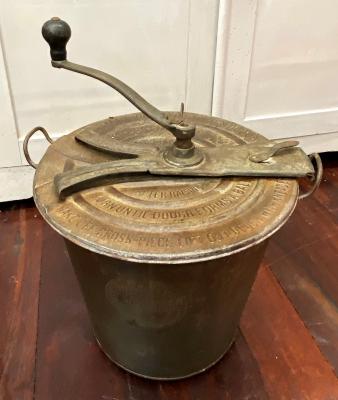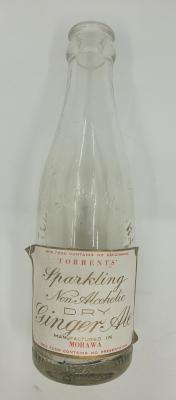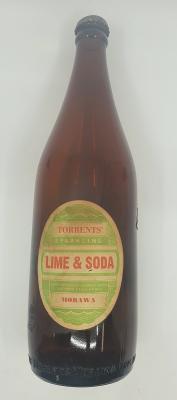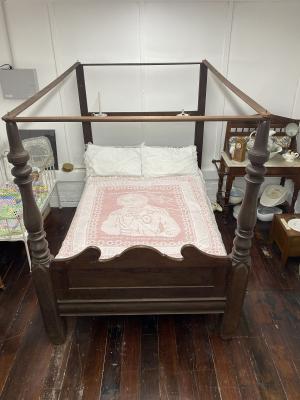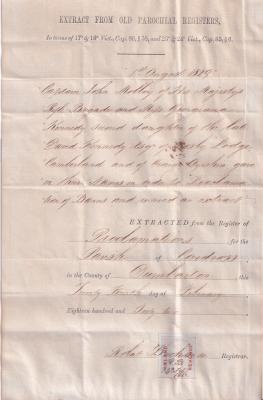Salmon Cleaning Bench
c. 1945Wooden bench with wire cleaning wheel, to scale the fish, at one end and a circular saw to fillet the fish at the other.
This prototype fish cleaning bench was designed by Jack Couch, made by Mr Len Simmonds and used by Jack Couch and Noel Wright for salmon cleaning between 1945-1956. The bench was fitted with devices that would scale, clean and cut the head and tail of the salmon. One year there was a record catch when 200 ton of salmon was caught in one day (approximately 256 fish per ton) and operators using this very bench managed to clean 70 ton of those fish in only 3 days.
Commercial salmon fishing off the West Australian coast has been occurring since 1940, making it one of the oldest commercial fisheries in WA. Commercial fishers in WA traditionally target salmon during the annual autumn ‘salmon run’ in March and April when large schools form near the shore. Traditionally the majority of salmon were caught from the shore by a method called seine, where a net is rowed out encircling the school and then manually hauling the net and fish back to shore.
The first recorded west coast salmon fishery began in 1946 off the coast of Hamelin Bay and has a long and messy history. During peak season it was typical to catch daily hauls of 10 to 15-tonnes.
In the early 1950's, local fishermen Jack Couch and Noel Wright started the Eagle Bay Syndicate and recruited members Dave Reid, Arthur Peak, Jack Farrell and Vince Miles. They employed men and women from the surrounding farming district to help pull the beach seine nets ashore and then clean the thousands of salmon before trucking them to a cannery in Perth.
In the late 1950s the syndicate joined forces with Bunbury fisherman Nick Soulos, who initiated the building of a 12m x 4m storage shed at Eagle Bay on a piece of land allocated by the government. A cleaning shed and mess hall were also built before a salmon factory opened in Busselton in the early 1960s
Details
Details
Between March and May each year the Australian Salmon conduct their spawning run from the great Australian Bight to high up the WA coastline. Australian salmon live for approximately 7-12 years and start the annual migration at about 3-4 years of age.
While many fishermen in the 1940s eagerly anticipated the adrenalin rush of spotting fish, then netting and landing them, the cleaning before sending them to the cannery was a tough process. Jack Couch and Len Simmonds revolutionised the grimy cleaning process by inventing a salmon-cleaning table with a circular saw and wire brush cleaning wheel. Initially the bench was used on the beach at Eagle Bay and fishermen would slit the throats of the fish and place them head-down on the bench to bleed before cleaning them to be sent to the West Coast Cannery in Perth. Mr Couch’s son David remembers watching his dad and the other fishermen cleaning fish at Eagle Bay during this time.
“I can remember a young lady complained about sinking into a pit of offal on the beach and that’s when the cleaning sheds were built,” he said.
Former salmon fisherman Richard Lear said the industry was a huge employer because it paid highly in comparison to farming.
“They made twice as much cleaning salmon as they did farming,” he said. “But sometimes they worked 14 to 16 hours (a day) because there was nowhere to store them.”
In 2006 the Busselton Historical Society transported the bench from its last resting place in Quindalup to the Museum were Society volunteers loving restored it to its former glory.
WA
Australia
Busselton Historical Society
Busselton Historical Society
Other items from Busselton Historical Society
- Crown Raisin Seeder #4
- Model of the Barrabup Mill
- Universal Bread Maker # 8
- Sparkling Ginger Ale Bottle - Torrents Morawa
- Sparkling Lime & Soda Bottle - Torrents Morawa
- The Yelverton Bed
- Chastity Belt
- Proclamation of Banns - Captain John Molloy and Georgiana Kennedy
- Sleeper Cutters Dray Display
- Len Woods Sulky
- Spring Cart with Super Spreader
- Doctors Buggy and Horse Display


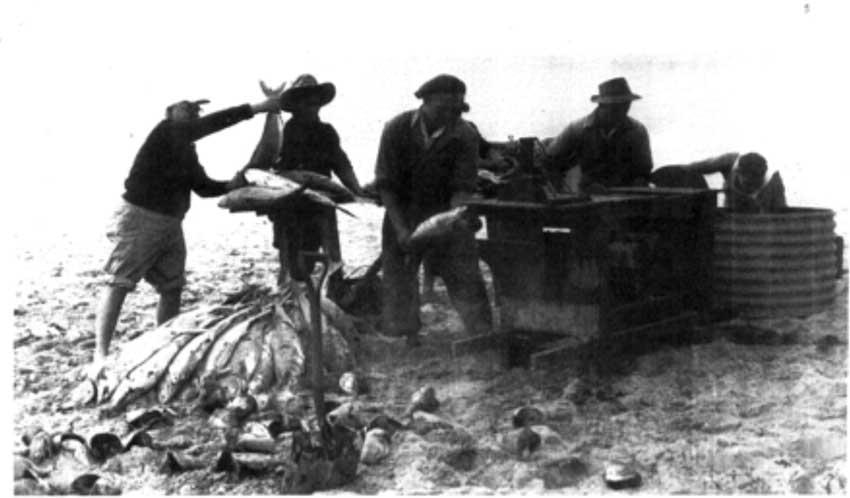

Scan this QR code to open this page on your phone ->

